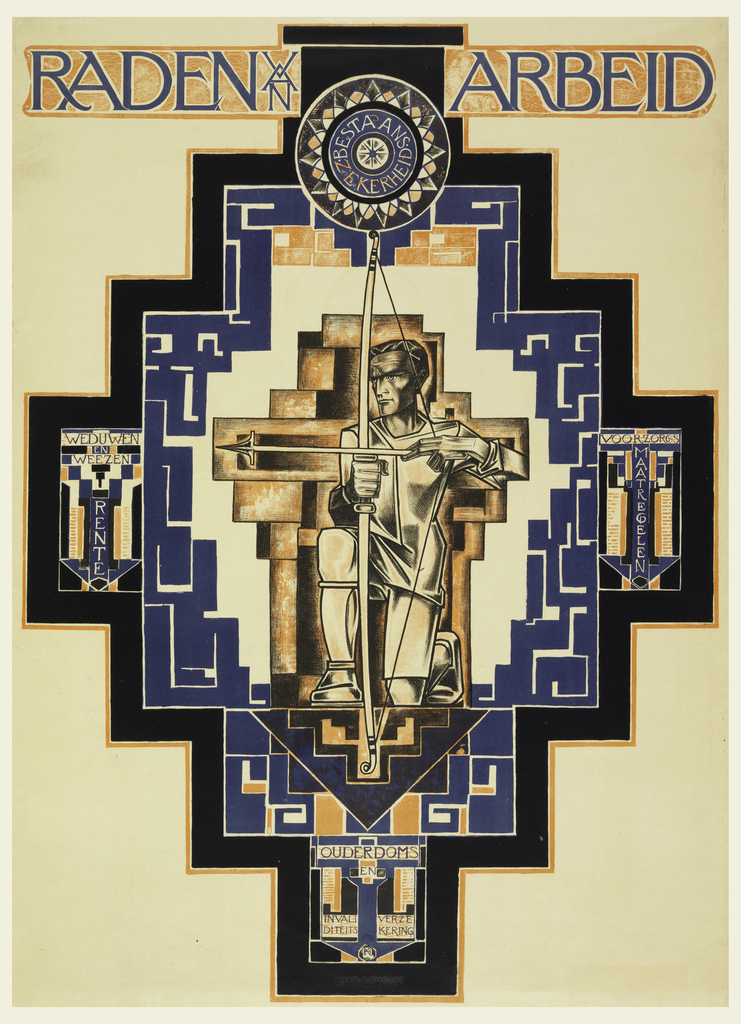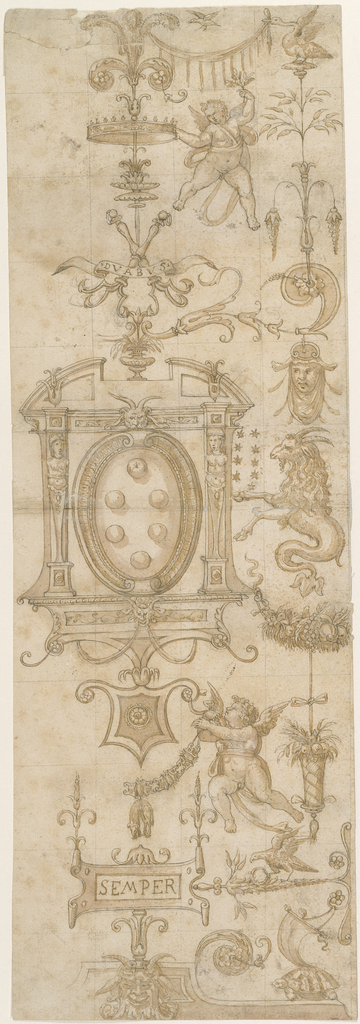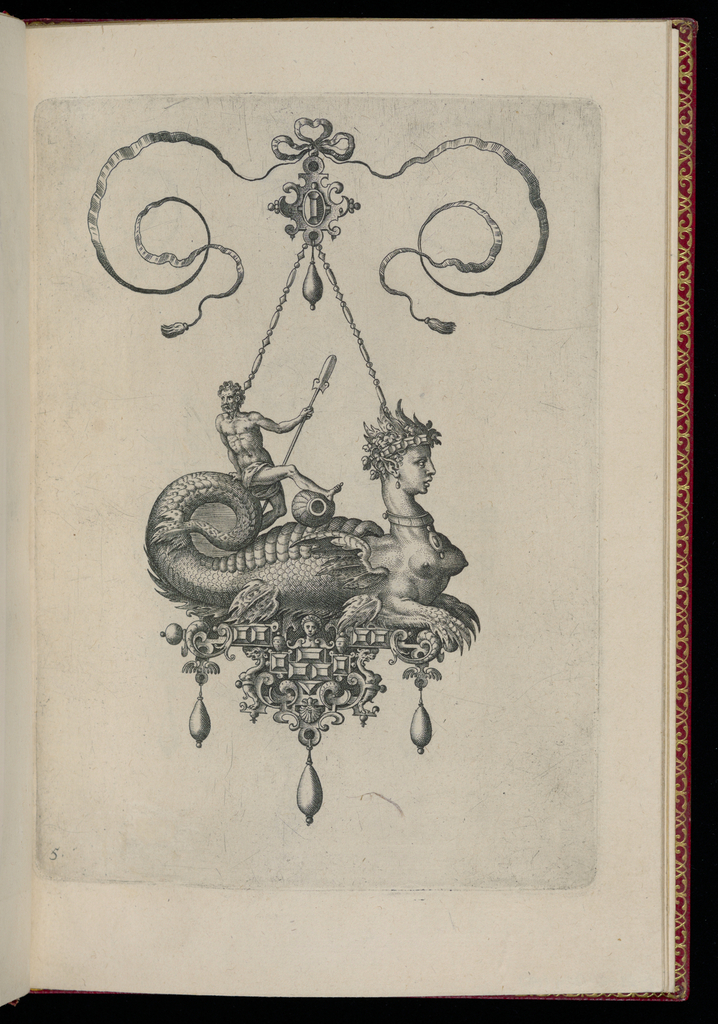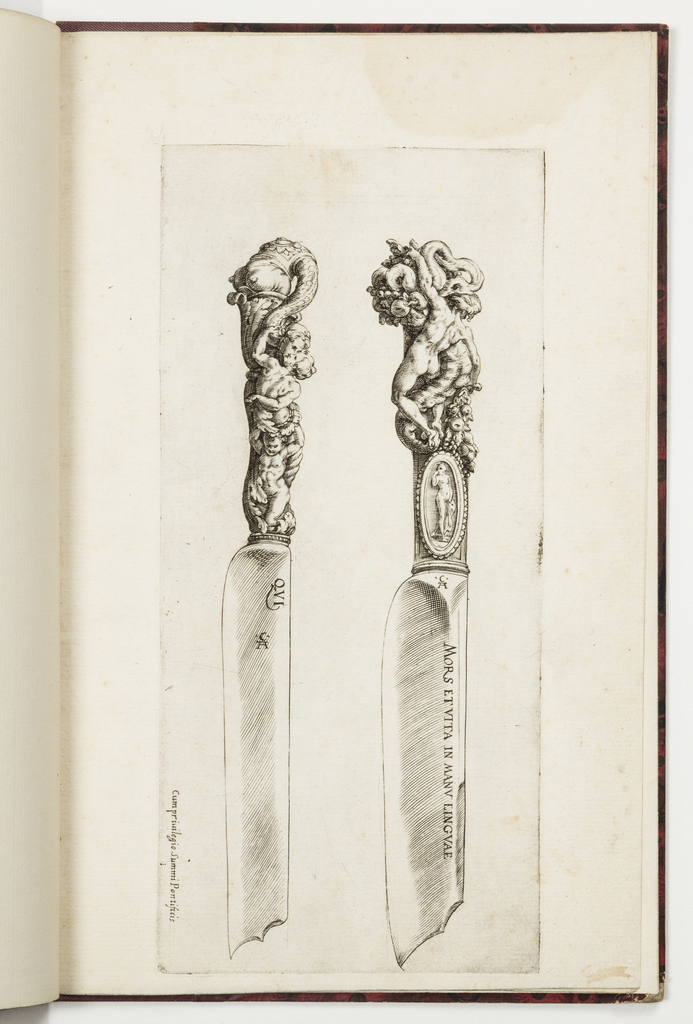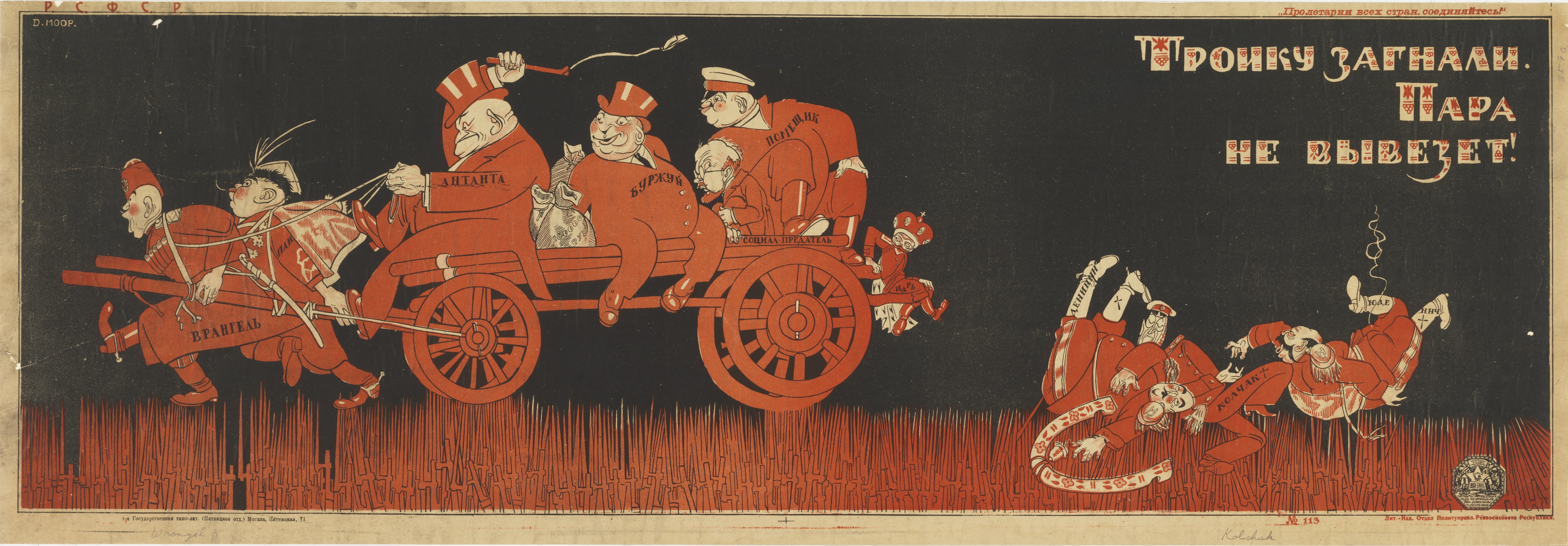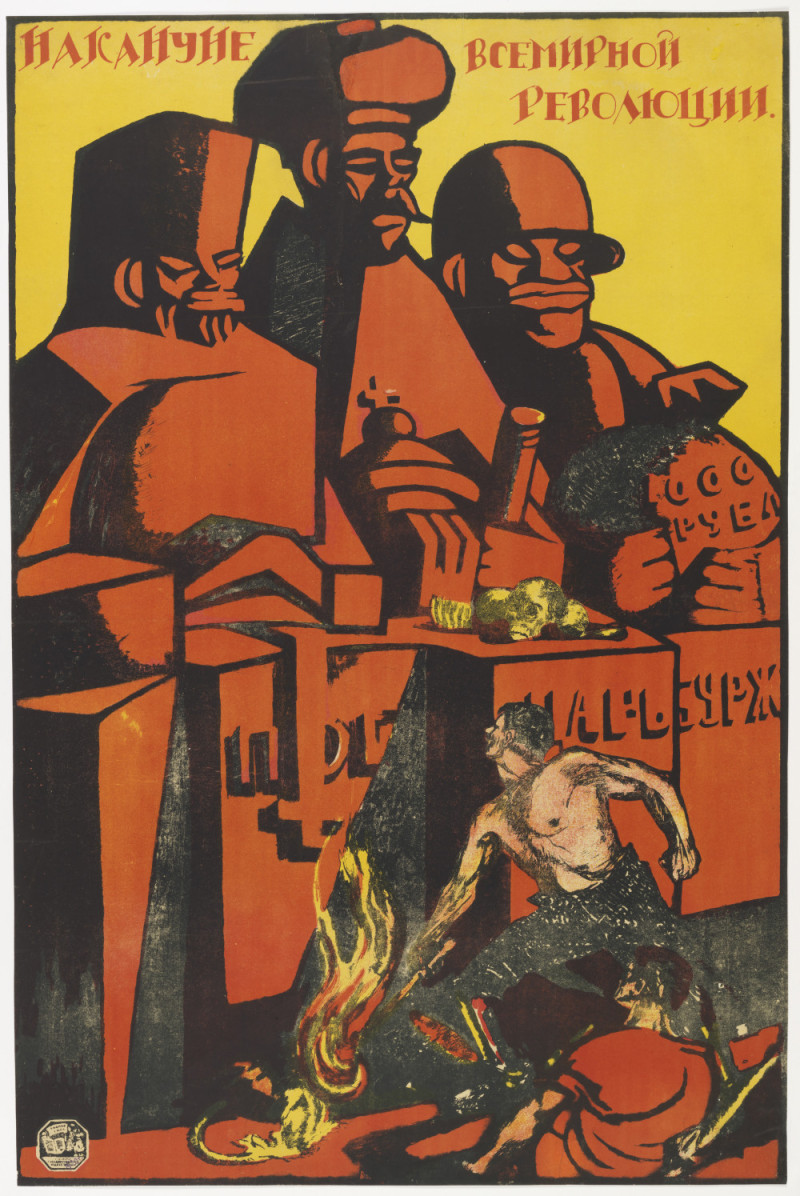In celebration of May Day—at a moment when the essential role so many workers play in our community is at the forefront of our minds—we are re-posting a modified version of this blog by Virginia McBride originally published November 8, 2015. Formerly a 2014 Peter Krueger curatorial intern, then a Curatorial Assistant, and Cataoguer in Cooper Hewitt’s...
What do balls, goats, and turtles have in common? …They’re all symbols of a powerful man. In 1570, Cosimo I de’ Medici opened the Laurentian Library in Florence, realizing a decades-long project to house and promote his family’s vast collection of scholarly manuscripts.[1] This drawing shows a design for one of the library’s stained glass...
An oarsman reclines on a sphinx’s scaly tail in this design for a pendant. Enameled, bejeweled, and dangling from a noblewoman’s gown, the imperious sphinx would appear fully tamed. Like the other marine monsters in this series of pendant designs by Hans Collaert, she symbolizes the sea’s abundance, harnessed by Flemish fishermen and merchants. These...
“Death and life are in the power of the tongue,” warns a proverbial inscription on a knife blade imagined by Francesco Salviati. Knife handles further illustrate the tongue’s pleasures and perils, and these sensuous yet violent scenes seem to caution diners about to indulge. On one handle, a figure risks a snakebite to reach into...
Aim—pull—release! This archer draws back his bowstring and prepares to shoot. Peering into the distance, he points his arrow off the poster’s printed page. But designer Richard Roland Holst leaves no doubt about his target: a bullseye hovers just above his head, bearing the Dutch words for “Livelihood.” In this poster promoting the Labor Board...
In this Soviet poster designed by Dmitri Moor, cartoonish figures trek across a dark landscape transformed by war. Along the lower border, Moor substitutes bloody bayonets for blades of grass, implying that Soviet land is hostile to these travelers, all of whom are enemies of the Bolshevik cause. The poster satirizes Soviet adversaries in both...
The huge figures dominating the composition of this Soviet poster stand as grotesque monuments to Russia’s imperial past. Labeled pedestals identify them as priest, tsar, and bourgeoisie—all cruel oppressors in the eyes of the new regime. Their rough-hewn faces crudely caricature the elegant, ostentatious sculptures of past tsars, and they tower over two naturalistically rendered...
Bold text surrounds a black-and-white photograph of Joseph Stalin in this Soviet poster from 1931. The poster was designed to reinforce the tenets of a speech by the leader, delivered to a meeting of industrial managers in June of the same year. The speech outlined six conditions for new industrial development, all of which are...
You don’t need to read Russian to understand this Soviet poster. Two larger-than-life hands lower a huge book from the sky, holding it open for all to read. Crowds flock to the book, extending as far as the eye can see. In unmistakable visual language, designer Sergei Ivanov conveys the importance of literacy—a crucial issue...
